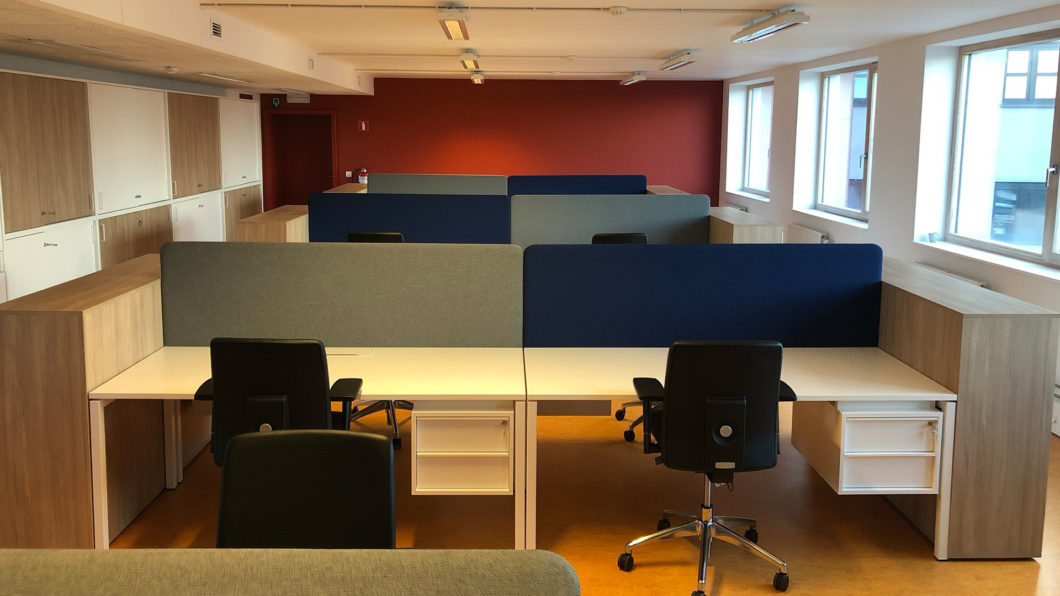An office plays a more important role than being the place you happen to work in. The more thought you put into the structure and substance of your workspace or that of your employees, the more conducive it would be to work in and the greater will be employee productivity.
A quality office design or workspace design results in a less stressful and more productive atmosphere for employees and visitors alike. Too often, employers make the mistake of not putting in enough thought into the design and décor of the physical environment of their employees, and this leaves employees uncomfortable, stressed, and less productive than they otherwise could be.
The fact is that the average worker spends about thirty percent of their lives in their office space, and whether or not they enjoy being there will determine if that is the most productive thirty percent of their lives.
In truth, office design is such a critical business investment that an international organization (The WELL Building Standard) has sprung up solely to establish the requirements and guidelines for creating a conducive office.
So, what are the aspects of office décor that can maximize and boost productivity?
Comfort
First and foremost, your office space should be one that offers comfort. This is one of the most important factors why people want to be anywhere—work is stressful and demanding enough without having to deal with the pain of an uncomfortable office.
This is where ergonomics come in. Using the ergonomically correct furniture will lessen fatigue, eliminate instances of musculoskeletal disorders, and boost productivity. Using the right sort of the chair or choosing to use sit-stand desks could significantly reduce all the causes of lost work time and poor productivity.
Other tips for creating a comfortable work environment include:
- Opting for ergonomically conscious work areas that offer the chance to work from sitting and standing positions.
- Allocating different areas from which employees can work throughout the day, so they never feel cooped up or bogged down.
- Establishing quiet zones or doing the utmost to minimize the sounds from activities and gadgets in the building.
- Defining breakout areas, informal meeting zones, and other spaces conducive for the creative process and brainstorming.
Harness Natural Light for Greater Productivity
Poets and scientists alike have written about it for a reason. There is something about natural sunlight that quickens the senses, awakens our energies, and stirs the creative juices.
In fact, according to research carried out by The University of Cornell, offices that are optimized or tailored to let in as much natural light as possible produced an 84% drop in symptoms like eye strain, headaches, and blurred vision in employees.
Symptoms like these are among the most recurrent reasons why employee productivity drops, so this impact of natural light is not something to be snuffed at.
Try pulling the office blinds back or using sheer curtains instead of the opaque ones. Organize desks so that they stand near windows. Do away with the fluorescent lights you presently have installed at the office. Green-tinted fluorescent lights are just the sort of lights that have been found to cause headaches. Even if you don’t have enough windows to usher in adequate amounts of sunlight, you can opt for office lamps or desk lamps fitted with white incandescent bulbs.
Incorporate Nature with Office Plants
It is easy to overlook our need for natural things around us, especially in this modern day and age. As human beings, if we don’t get our daily dose of nature in our routines, the cracks start to show soon enough. Consider the amount of time that your employees spend in your concrete box working, and you can easily see how the isolation from nature could potentially become a problem for productivity levels.
Luckily, this is an easy problem to work around. Installing plants in your workspace can usher in a host of benefits including better air quality and circulation, better engagement between workers and their environment, and better overall productivity. Office plants also reduce stress, anxiety, and fatigue, all of which factor into productivity levels. They also add a nice aesthetic to the office, giving it a better and less bland look.
Pay Attention to the Color Palette
Don’t just choose your favorite color as the theme for your office space walls. You can do better than that. Given the influence which colors have on the mood and the reigning atmosphere, you don’t want to choose your color palette on a whim.
There are a lot of scientific studies that highlight the effect that colors have on mood and productivity.
For example: blue-hued colors stimulate the mind and boost mental capacity, yellowish colors boost creativity, and green colors can ease relaxation. These colors boost productivity.
On the other hand, bland colors like beige, gray, and white will inspire a gloomy, dour atmosphere. They also tend to have a heavier effect on women more than men. Red is intense and eye catching, with the potential to distract or overwhelm. A room with too much red may assault the senses of your employees too much and sap productivity. On the hand, strategically placing just the right amount of red in the right place could lead to increased passion.
Optimize Your Office for Space
An office space is never one thing all the time. Needs change as tasks change, therefore to increase productivity you have to take space into account when making decisions about your office space.
Offices should incorporate space for personal offices and desks, collaborative employee spaces, meeting rooms, and so on.
Each aspect of the office décor should reflect the room it is meant for. Rooms that are reserved for creative work, for example, should have colors and designs that reflect that. You don’t want productivity in one area to go hand in hand with a lag in another area.
Conference rooms and other meeting rooms could be designed to ease relaxation and to be convenient with enough power outlets to foster collaboration and boost productivity.

